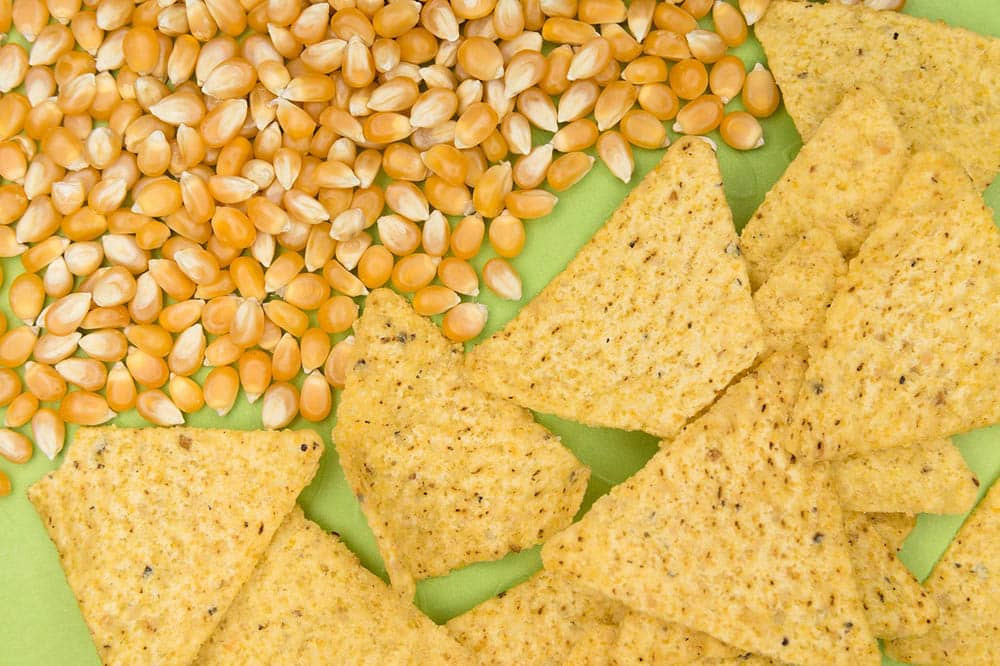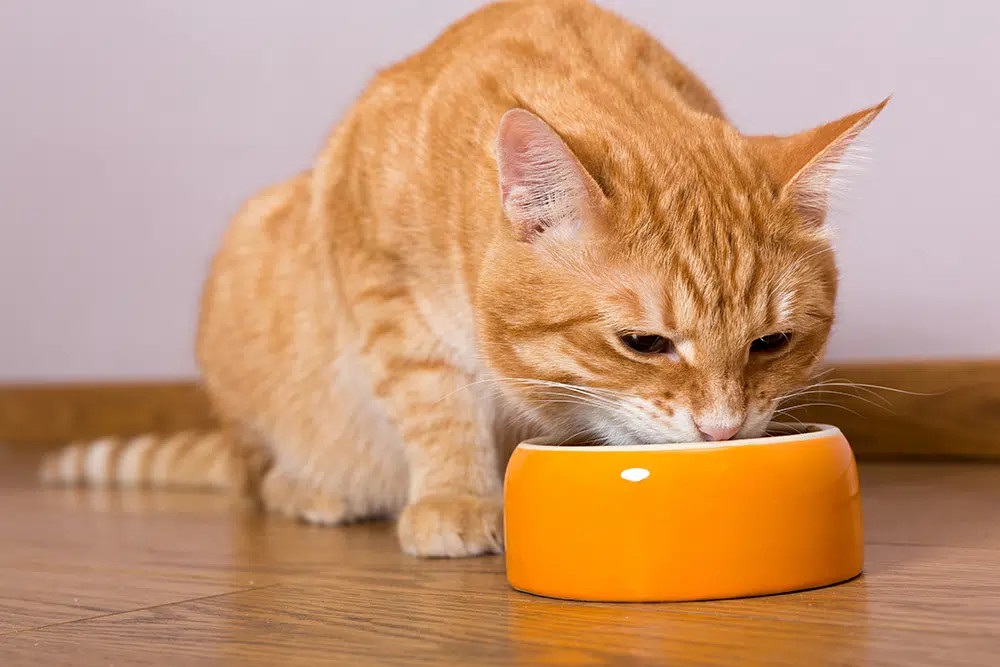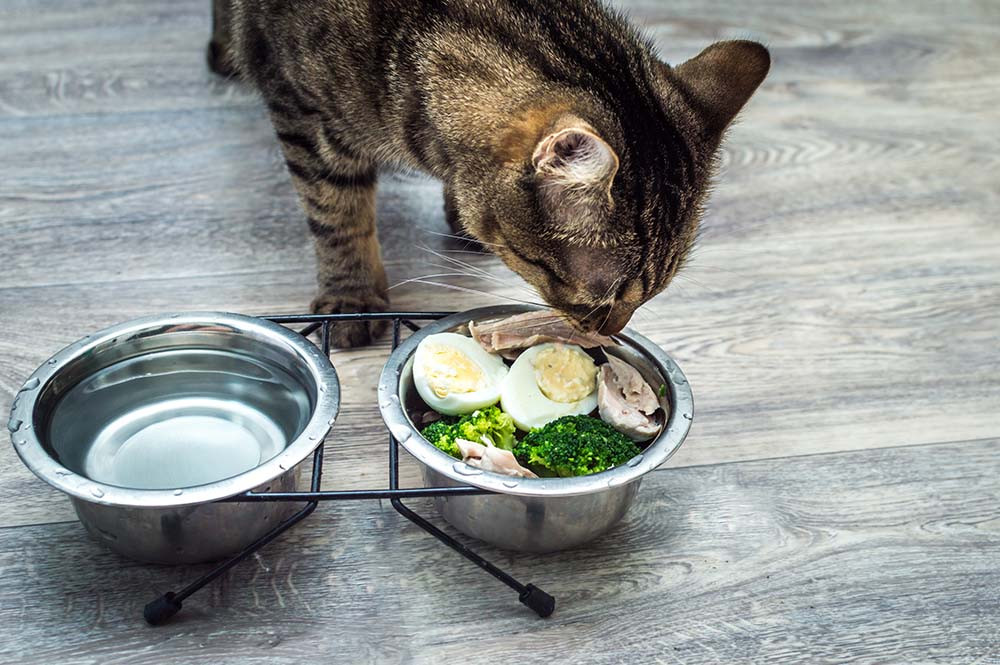Are you wondering if it’s safe to share a piece of your tortilla with your feline friend? Cats can eat tortillas in moderation, but they shouldn’t be a regular part of their diet due to the potential for high sodium content and other ingredients that are not ideal for feline health. Join us at solcat.net as we explore the ins and outs of feeding tortillas to cats, what types are safer, and what other human foods make healthier snacks for your beloved pet. This information will help you make informed decisions about your cat’s nutrition and wellbeing, ensuring they get the best care.
1. Are Corn Tortillas Safe for Cats?
Yes, corn tortillas can be a quick source of energy that is easily digested for cats. However, corn tortillas shouldn’t replace any part of your cat’s regular diet, since cats are primarily carnivores and need protein more than carbohydrates.
A few bites of a plain corn tortilla or a small piece of a corn chip is unlikely to harm your cat. Many cats will enjoy it as an occasional treat. You should not give your cat a handful of chips, because the high sodium content can lead to significant health issues, such as confusion, coma, and even seizures. For a healthier option, consider making your own tortillas or chips at home, which allows you to control the ingredients and reduce the amount of salt.
 Close-up of tortilla chips
Close-up of tortilla chips
2. What About Flour Tortillas? Can Cats Eat Flour Tortillas?
Cats can consume flour tortillas in very small amounts. Your cat’s digestive system isn’t really designed to process large amounts of white flour. You can offer your cat a bit of plain, unseasoned flour tortilla as an occasional treat, but flour-based products shouldn’t be fed to your cat on a regular basis.
Keep in mind that many commercial cat foods already contain some white flour. This is an important consideration when you’re thinking about sharing your taco with your cat. It’s always a good idea to check with your vet before making any changes to your cat’s diet. For more information on pet nutrition, visit solcat.net.
Consulting a Vet About Your Cat’s Diet
For personalized advice about your pet’s diet, you can speak to a vet online from the comfort of your couch. Services like PangoVet offer affordable access to veterinary professionals who can provide the guidance you need.
3. What Harmful Ingredients are Commonly Found in Tortillas for Cats?
3.1. Sodium
High sodium levels in tortillas and tortilla chips can be detrimental to your cat’s health. Cats require much less sodium than humans, and their needs are met quickly.
A medium-sized cat needs only about 21 mg of salt each day and shouldn’t consume more than 42 mg in a single day, according to research from the Journal of Nutrition. To illustrate, a 1-ounce serving (approximately 15 chips) of Lay’s BBQ potato chips contains 150 mg of salt. As you can see, just a couple of chips could exceed your cat’s daily recommended sodium intake.
Excessive salt intake can lead to an imbalance of electrolytes and disrupt the normal function of your cat’s cells.
3.2. Saturated Fat
Saturated fat, which is more prevalent in chips, can negatively impact cholesterol levels and artery health in cats. It shouldn’t be a significant part of their diet. Consuming too much saturated fat can lead to serious health problems. Cats also need essential fatty acids for optimal health.
4. What Human Foods are Safe and Healthy for Cats to Eat?
While tortillas may not be the best snack for your cat, there are plenty of other human foods that are safe and nutritious. The first step is always to make sure that your cat has a high-quality cat food that meets all of its basic nutritional needs. If you want to supplement your cat’s diet with human food, here are some good choices.
4.1. Meat
As obligate carnivores, cats require protein to stay healthy. Cooked beef, chicken, or turkey can be a great way to increase their protein intake and provide a tasty treat. Make sure any meat you give your cat is unseasoned and not cooked in oils or fats.
Ensure the meat isn’t spoiled or raw, as this could make your cat sick. Remember, if you wouldn’t eat it, don’t give it to your cat.
 Orange cat eating from a bowl
Orange cat eating from a bowl
4.2. Whole Grains
Certain cooked whole grains such as oats, corn, and polenta are safe for cats. You can also offer couscous or millet, which are smaller grains and may be more appealing to cats. Oats are a good source of protein and are easy to prepare.
4.3. Fish
Fish is a great source of omega-3 fatty acids, which can help prevent arthritis and heart disorders and are beneficial for your cat’s eyesight. Be sure to only give your cat cooked fish. Never offer sushi or raw fish.
4.4. Eggs
Cooked eggs are another excellent source of protein and make a great snack option for your cat. However, raw eggs should be avoided, as they can make your cat sick.
4.5. Vegetables
While not all cats are interested in vegetables, they can provide essential vitamins, fiber, and water that support digestion. Safe options include fresh cucumber, steamed broccoli, and asparagus.
4.6. Cheese
Cheese is a good source of protein, but should only be given in small amounts. Since the protein in cheese differs from the complete protein found in meat, fish, and eggs, and because many cats are lactose intolerant, it’s best to limit cheese and avoid milk altogether.
 Cat eating eggs and veggies
Cat eating eggs and veggies
5. How Often Can You Safely Give Your Cat Snacks?
You should limit snacks and treats to just 10% of your cat’s daily caloric intake. For example, if your cat eats 200 calories a day, treats should not exceed 20 calories. The timing and frequency of these treats is less important than staying within the calorie limit.
Overfeeding can lead to feline obesity, which can cause numerous health issues. While it’s tempting to indulge your cat’s cravings, maintaining their health should be your priority. For more tips on cat nutrition, explore solcat.net.
6. Cat Food and Treats: Recent Updates and Information
| Topic | Details |
|---|---|
| New Cat Food Products | Recent advancements in cat food formulas include options with higher protein content, grain-free recipes, and specialized diets for sensitive stomachs. Brands like Royal Canin and Purina Pro Plan offer a variety of formulations catering to different life stages and health conditions. |
| Treat Innovations | Innovative cat treats now include freeze-dried options, dental treats that promote oral health, and interactive treats that stimulate mental activity. Brands like Greenies and Temptations have expanded their lines to offer more health-focused and engaging treats. |
| Nutritional Research | Ongoing research at universities and veterinary centers is focusing on the optimal balance of nutrients for feline health. Studies at the Cornell Feline Health Center are exploring the effects of different protein sources and carbohydrate levels on feline metabolism and overall well-being. |
| Dietary Supplements | The market for cat dietary supplements is growing, with products designed to support joint health, boost the immune system, and improve coat condition. Supplements containing omega-3 fatty acids, glucosamine, and probiotics are becoming increasingly popular among cat owners. |
| Pet Food Recalls | Stay informed about pet food recalls. The FDA and AVMA regularly update lists of recalled products due to contamination or mislabeling. Always check product labels and subscribe to recall alerts to ensure the safety of your pet’s food. |
| Specialized Diets | Specialized diets for cats with health issues such as diabetes, kidney disease, and allergies are becoming more sophisticated. These diets often require a prescription from a veterinarian and are formulated to manage specific conditions through controlled levels of protein, phosphorus, and other nutrients. |
| Trends in Cat Nutrition | Current trends in cat nutrition include a focus on natural and minimally processed ingredients, a greater emphasis on protein, and an increased awareness of the role of diet in managing chronic diseases. Many cat owners are also exploring raw food diets, although these require careful preparation and consultation with a veterinarian to ensure they are nutritionally complete and safe from bacterial contamination. |
7. What are the Signs of Sodium Poisoning in Cats?
If a cat eats too many salty foods, like tortillas, they may develop sodium poisoning. It’s essential to recognize these signs early to seek veterinary care promptly. Here are the main symptoms to watch for:
- Excessive Thirst: Increased water intake is one of the first signs.
- Frequent Urination: The cat might urinate more often than usual as the body tries to flush out the excess sodium.
- Vomiting: This is a common symptom as the body tries to get rid of toxins.
- Diarrhea: Like vomiting, this is another way the body attempts to eliminate the excess sodium.
- Loss of Appetite: The cat may refuse to eat, showing a general disinterest in food.
- Lethargy: A noticeable decrease in energy and activity levels.
- Confusion: The cat may seem disoriented or have difficulty recognizing familiar people or surroundings.
- Muscle Tremors: Uncontrolled shaking or twitching of the muscles.
- Seizures: In severe cases, sodium poisoning can lead to seizures, which require immediate veterinary attention.
- Coma: The cat may become unresponsive and lose consciousness.
If you observe any of these symptoms after your cat has consumed tortillas or other salty foods, contact your veterinarian immediately. Prompt treatment can significantly improve the chances of recovery.
8. Alternative Treat Ideas for Cats
Instead of tortillas, there are numerous healthy and safe treat options for your cat. These alternatives provide essential nutrients and cater to their carnivorous needs. Here are some ideas:
- Cooked Chicken: Plain, cooked chicken is an excellent source of protein. Ensure it is unseasoned and cut into small, manageable pieces.
- Cooked Fish: Salmon, tuna, or mackerel, cooked and deboned, provide omega-3 fatty acids that are beneficial for their coat and overall health.
- Commercial Cat Treats: Choose high-quality cat treats that are specifically formulated to meet their nutritional needs. Look for treats with minimal additives and high protein content.
- Freeze-Dried Meat Treats: These treats are made from pure meat and are a great source of protein. They are also low in calories and free from artificial preservatives.
- Vegetables: Some cats enjoy cooked or steamed vegetables like carrots, broccoli, or green beans. These can provide essential vitamins and fiber.
- Homemade Cat Treats: You can make your own cat treats using recipes that incorporate safe and healthy ingredients like oats, chicken, and fish.
By offering these alternatives, you can ensure your cat enjoys a tasty treat without the risks associated with salty and processed foods like tortillas.
9. How to Safely Introduce New Foods to Your Cat’s Diet
Introducing new foods to your cat’s diet should be done gradually to avoid digestive upset. Start with a small amount of the new food and monitor your cat for any adverse reactions. Here’s a step-by-step guide:
- Start Small: Begin by offering a very small portion of the new food, about a teaspoon or less.
- Mix with Regular Food: Mix the new food with your cat’s regular food to make the transition easier.
- Observe for Reactions: Watch for any signs of digestive upset, such as vomiting, diarrhea, or loss of appetite. These symptoms may indicate that the food is not suitable for your cat.
- Gradually Increase the Amount: If your cat tolerates the new food well, gradually increase the amount over several days while decreasing the amount of regular food.
- Introduce One New Food at a Time: To identify potential allergens or sensitivities, introduce only one new food at a time.
- Consult Your Veterinarian: If you have any concerns or questions, consult your veterinarian before making significant changes to your cat’s diet.
By following these guidelines, you can safely introduce new foods to your cat’s diet and ensure they receive a balanced and nutritious meal.
10. Feline Nutrition and Wellness Tips
Proper nutrition is essential for your cat’s overall health and well-being. Here are some tips to help you ensure your cat is getting the best possible diet:
- Choose High-Quality Cat Food: Select a cat food that is specifically formulated for their life stage (kitten, adult, senior) and any specific health conditions.
- Follow Feeding Guidelines: Adhere to the feeding guidelines provided by the cat food manufacturer to avoid overfeeding or underfeeding.
- Provide Fresh Water: Always ensure your cat has access to fresh, clean water.
- Avoid Toxic Foods: Be aware of foods that are toxic to cats, such as chocolate, onions, garlic, and grapes.
- Regular Vet Check-ups: Schedule regular check-ups with your veterinarian to monitor your cat’s health and discuss any dietary concerns.
- Monitor Weight: Keep track of your cat’s weight to ensure they are maintaining a healthy body condition.
- Proper Storage: Store cat food in a cool, dry place to prevent spoilage and maintain its nutritional value.
By following these tips, you can help your cat live a long, healthy, and happy life. For more information and resources on cat nutrition, visit solcat.net.
Conclusion
While sharing a tiny piece of plain tortilla with your cat might not be immediately harmful, it’s essential to be mindful of the potential risks associated with the high sodium content and other ingredients. It’s best to prioritize your cat’s health by offering them treats that are specifically designed to meet their nutritional needs. Remember, treats should only make up a small portion of your cat’s daily calorie intake, and consulting with your vet is always a good idea when considering dietary changes. To discover more about cat nutrition and wellness, explore solcat.net and join our community of dedicated cat lovers. You can also visit our physical location at 950 Alaskan Way, Seattle, WA 98104, United States, or call us at +1 (206) 386-4000 for more personalized advice. We’re here to help you provide the best care for your feline friend!
Frequently Asked Questions (FAQs) About Cats and Tortillas
1. Can kittens eat tortillas?
Kittens should not eat tortillas because their digestive systems are more sensitive and require a diet specifically formulated for their growth and development.
2. What should I do if my cat ate a whole tortilla?
Monitor your cat for signs of sodium poisoning, such as excessive thirst, vomiting, or lethargy, and contact your veterinarian immediately if you notice any concerning symptoms.
3. Are organic tortillas better for cats?
While organic tortillas may have fewer pesticides, they still contain high levels of sodium and carbohydrates, making them unsuitable for cats.
4. Can cats eat tortillas with toppings?
No, tortillas with toppings such as cheese, salsa, or guacamole are not safe for cats due to the potential for toxic ingredients and high fat content.
5. Is it okay to give my cat a tortilla as a distraction?
It’s better to use cat-safe toys or treats as distractions to avoid the risks associated with feeding them tortillas.
6. Can diabetic cats eat tortillas?
No, diabetic cats should not eat tortillas because the high carbohydrate content can negatively impact their blood sugar levels.
7. What are some signs of a food allergy in cats?
Signs of a food allergy in cats include itching, skin inflammation, vomiting, diarrhea, and hair loss.
8. Are homemade tortillas safer for cats?
Homemade tortillas can be slightly safer if you control the ingredients, but they are still not recommended due to the lack of nutritional benefits for cats.
9. Can cats eat gluten-free tortillas?
Gluten-free tortillas are not necessarily safer for cats, as they still contain carbohydrates and may have high sodium levels.
10. What are the best treats for cats with sensitive stomachs?
The best treats for cats with sensitive stomachs include hypoallergenic treats, single-ingredient protein treats, and treats recommended by your veterinarian.
